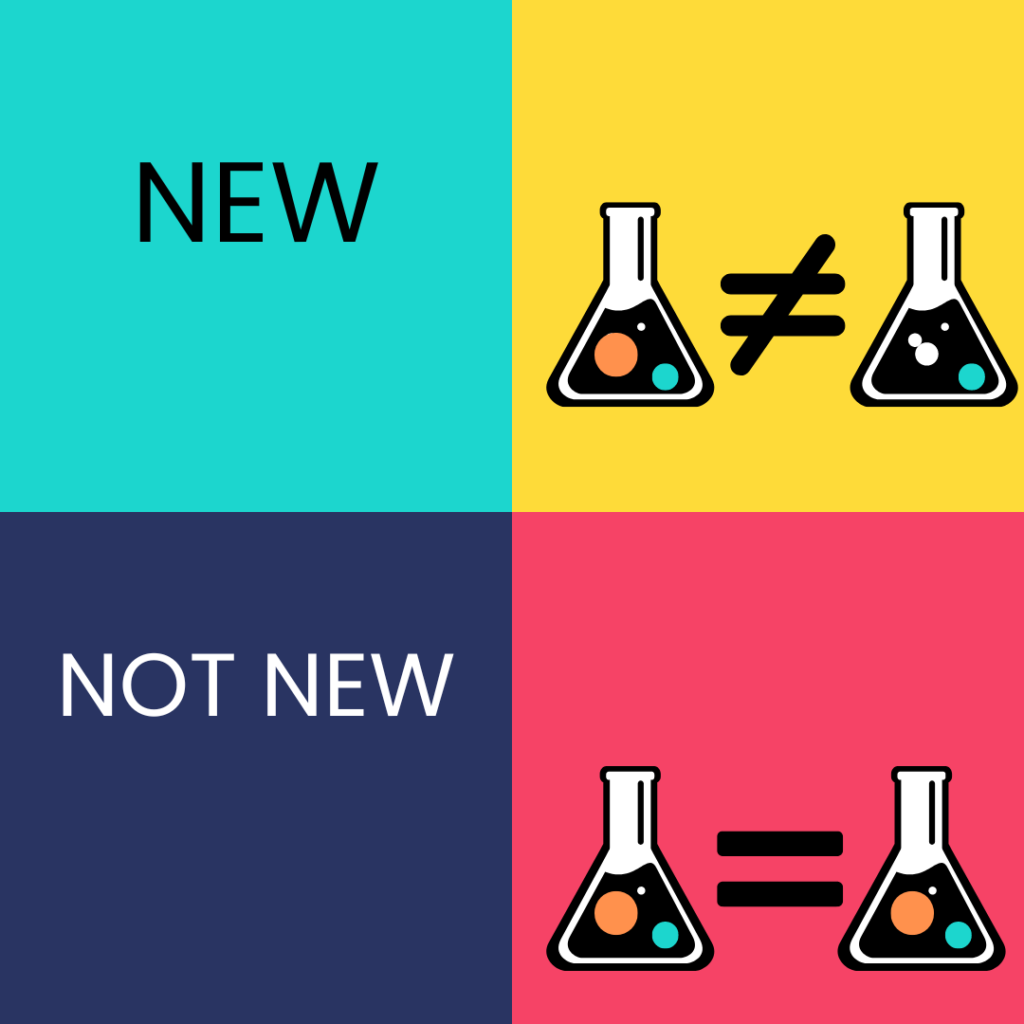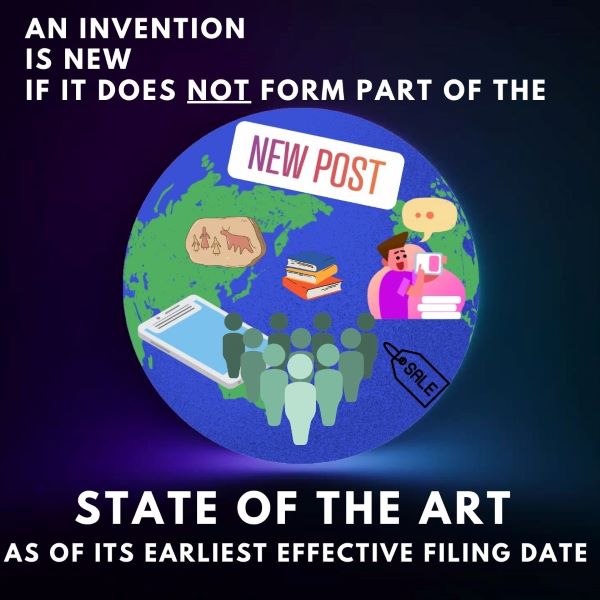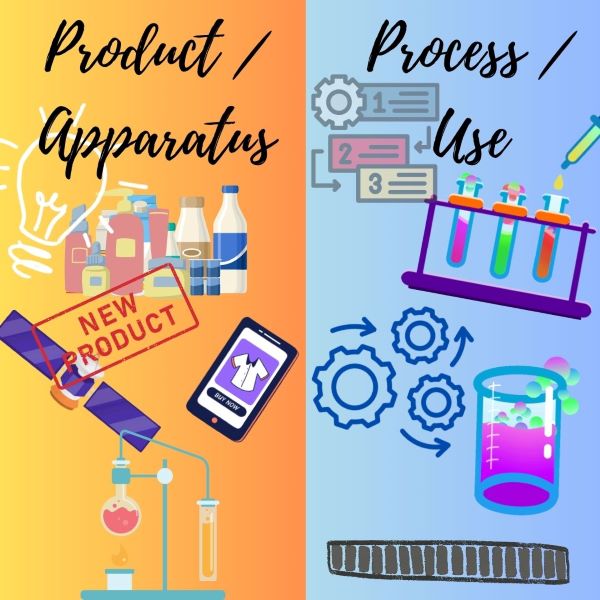As a startup founder, you have invested your time, effort, and resources to develop an innovative idea or product that can potentially change the world.
However, in today’s fast-paced and competitive business environment, innovation alone is not enough to ensure success. You also need to be able to protect your intellectual property to prevent others from copying your ideas and profiting from your hard work.
Of course, it is not economical to patent every single idea. The key is to identify the inventive concept that should be patented.
Patents give inventors the exclusive right to use and commercialize their inventions for a certain period of time, usually 20 years from the date of filing.
What is the state of the art?
In short, in German and European patent law, the state of the art is defined as everything that has been made available to the public by means of a written or oral description, by use, or in any other way, before the date of filing of the German or European patent application.
An invention must be new at the time of filing the patent application. This means that the invention must not have been made available to the public in any form anywhere in the world before the filing date of the patent application.
This includes written and oral descriptions, use, and other forms of disclosure.
The novelty requirement is intended to ensure that patents are granted only for truly new ideas and pursues the purpose of excluding the re-patenting of prior art.
Novelty
Novelty is an identity check, i.e. an individual comparison with one state of the art piece.

When assessing novelty it is further not enough only to consider the content of a single document: each entity described in the document also has to be examined separately.
It is thus not permissible to combine separate items belonging to different embodiments described in one and the same document merely because they are disclosed in that one document, unless such combination has been specifically suggested therein.
In other words, when the content of a single prior art document is considered in isolation when contesting the novelty of a claim, the said content must not be treated as something in the nature of a reservoir from which it would be permissible to draw features pertaining to separate embodiments in order to create artificially a particular embodiment which would destroy novelty, unless the document itself suggests such a combination of features (T 0305/87).
There are no restrictions on the geographical location, the language, or manner in which the information in question was made available to the public; also no age limit is stipulated for the documents or other sources of the information.

Public disclosure can come in various forms, such as:
- Written description: e.g. paper in a scientific journal, book, post, patent publication, newspaper article
- Oral description: e.g. holding a presentation, talking to members of the public who are not bound to secrecy, public lecture
- By use: e.g. publicly using or selling your innovative product
For instance, the chemical composition of a product is state of the art when the product as such is available to the public and can be analysed and reproduced by the skilled person, irrespective of whether or not particular reasons can be identified for analysing the composition. The same principle applies mutatis mutandis to any other product (G 01/92).
Inventive step
The inventive step requirement is sometimes referred to as the non-obviousness requirement.
It refers to the requirement that an invention must not be obvious to a person having ordinary skill in the relevant field. In other words, the invention must not be something that a skilled person could have easily thought of based on what was already known in the field.
The inventive step requirement is intended to ensure that patents are granted only for truly innovative and non-obvious ideas.
To determine whether an invention meets the inventive step requirement, the European Patent Office (EPO) uses a standard called the “problem-solution approach”.
Under this approach, the examiner identifies the closest prior art and the technical problem solved by the invention. The examiner then considers whether the solution provided by the invention would have been obvious to a person having ordinary skill in the field, based on the prior art.
It’s worth noting that even if an invention meets both criteria (novelty and inventive step), there are still other factors that can affect patentability, such as industrial applicability and grounds for exclusion from patentability.
Why is the State of the Art important for you as a startup founder?
If you produce your own state of the art before filing a patent application, it can make it much more difficult (or even impossible) to obtain a patent for your invention.
In other words, everything that is already publicly available cannot be patented under German and European patent law.
This means that if your invention has already been disclosed to the public before you file your patent application, you may not be able to obtain a patent for it.
Protect your big idea
So how can you avoid producing your own state of the art? Prioritize patent protection early on in the development process.
This includes keeping your invention confidential until a patent application has been filed if desired, conducting a comprehensive search of the state of the art to get a sense of your actual invention, seeking legal advice from a patent attorney, and start securing your intellectual property rights.
The extent of the protection conferred by a German or European patent is determined by the claims. Nevertheless, the description and drawings shall be used to interpret the claims.
Patent Claims – The Key to Protecting your Invention
Patent claims define your invention in clear and concise terms and play a crucial role in determining whether your invention is patentable and in defining the scope of your invention when dealing with patent and trademark offices, and potential infringers.
While the specification discloses the invention in a manner sufficiently clear and complete for it to be carried out by a person skilled in the art, the claims define the scope of your invention.
Your independent claim must comprise all the essential features necessary to solve the defined technical problem according to your invention, while dependent claims allow you to claim particular embodiments of your invention and may serve as fallback positions.
In addition, you can even claim different categories such as products, processes, apparatus, or use in one claim set. For many inventions, claims in more than one category are needed for full protection.

Patent claims are therefore the fundamental building blocks of patents that define the scope of protection for your invention.
The patent and law firm WINTER, BRANDL– Partnerschaft mbB has been part of the BayStartUp network for several years.
Our firm is characterised by a high level of commitment to advising founders on patent and trade mark law with regard to their innovative ideas and inventions.
Our concern is to protect innovations and to be your partner in the field of intellectual property.
Turning ideas into patents is an entrepreneurial decision based on weighing the expected strength of the invention, market potential and budget constraints.
We are pleased to offer you a free and non-binding initial consultation to get to know the law firm WINTER, BRANDL and to clarify general questions!
I am looking forward to hearing from you. Please feel free to reach out to: CRegler@wbetal.de
